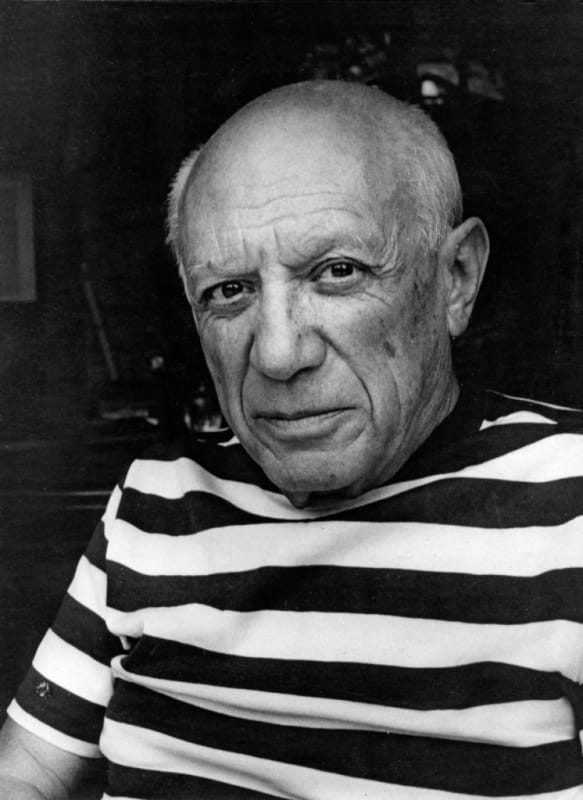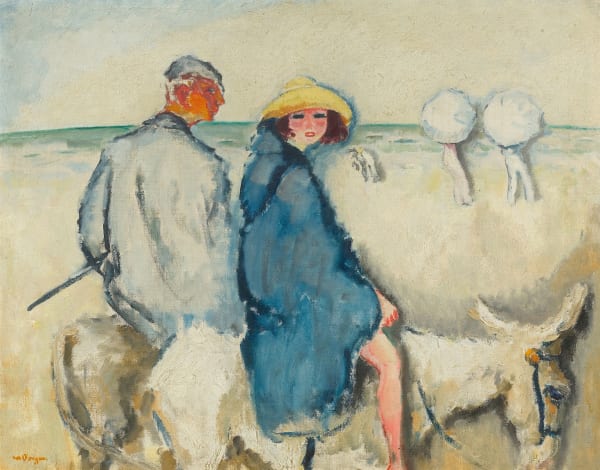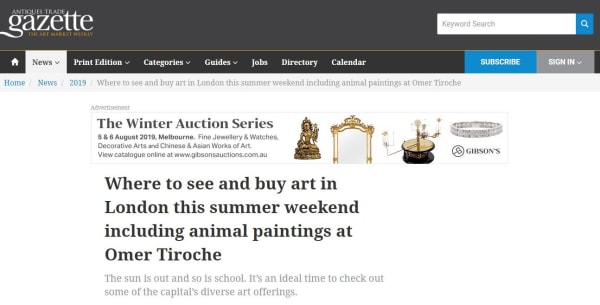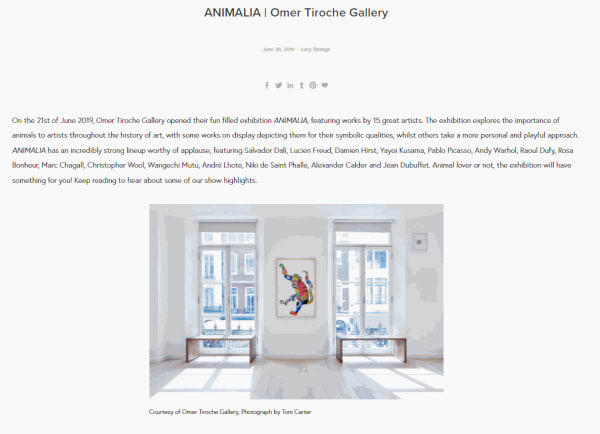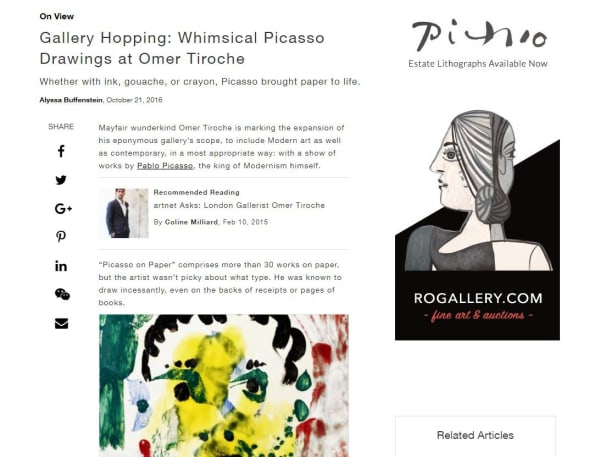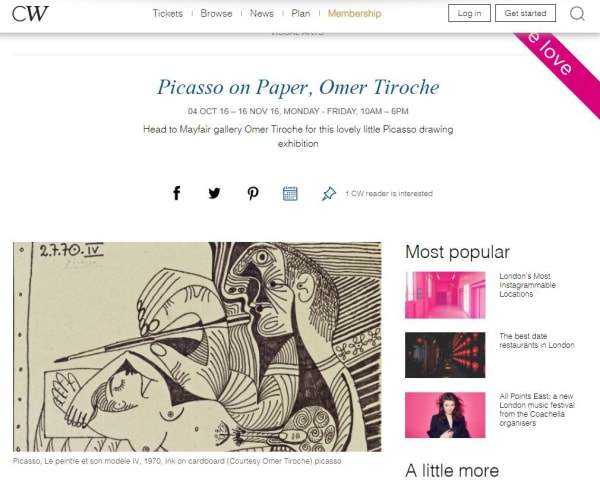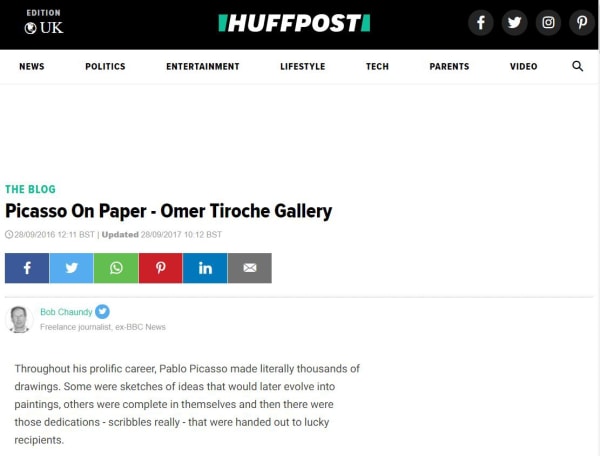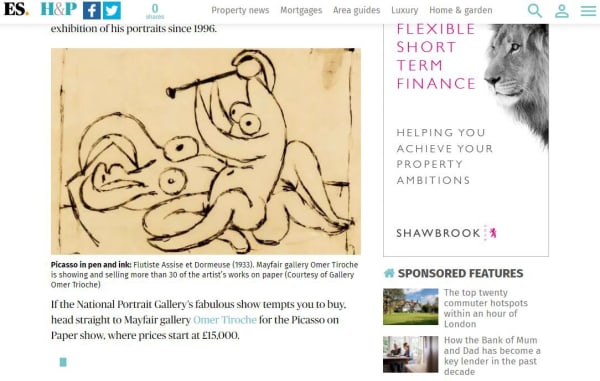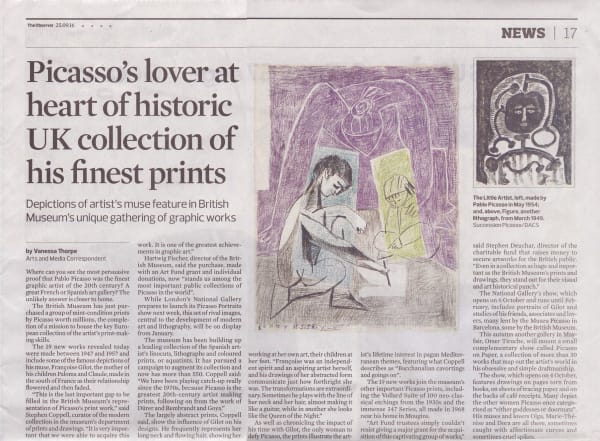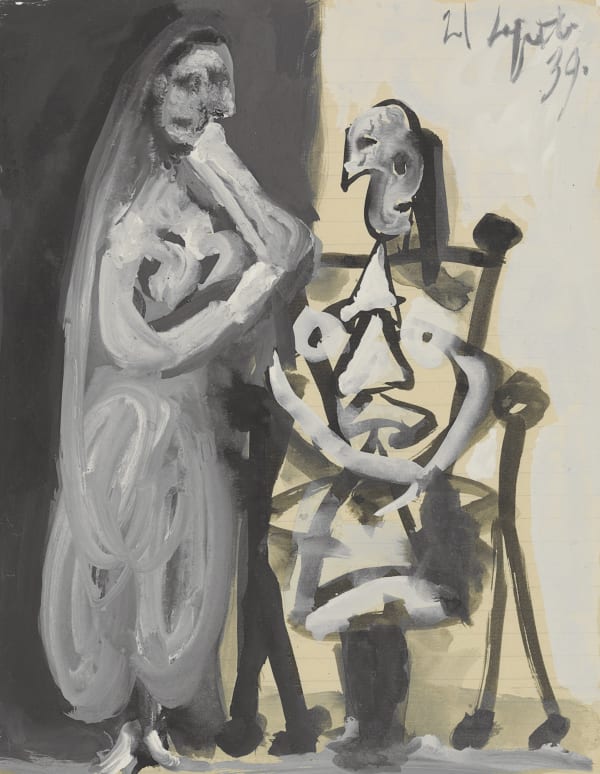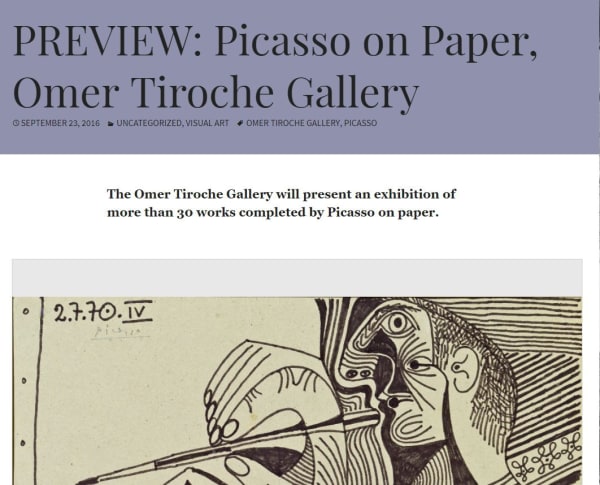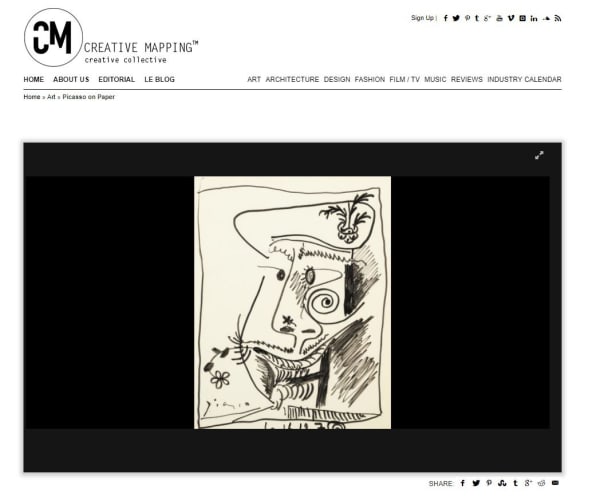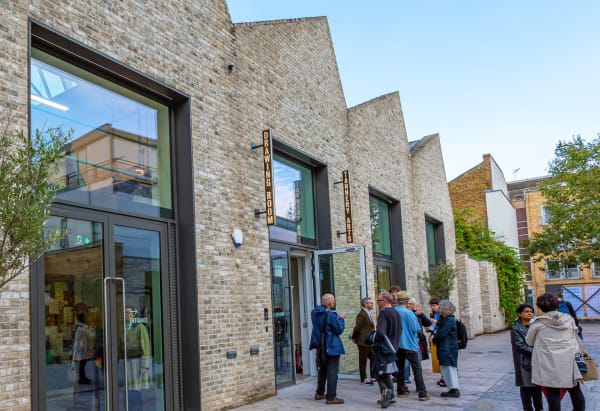Pablo Picasso Spanish, 1881-1973
Born in Málaga in 1881, Pablo Picasso is regarded as being the greatest and most influential artist of the 20th century. Encouraged to paint from an early age by his art teacher father, he was enrolled at the School of Fine Arts in Barcelona and the Madrid Academy, before leaving his studies to move to Paris in 1900. In Paris he associated with like-minded artists and poets, and began to receive critical attention for his own work. These melancholic early paintings are categorised as the ‘Blue Period’, which eventually gave way to the warmer tones of his ‘Rose Period’.
As a central figure in the Parisian art scene, Picasso experimented with a wide variety of styles and media – and invented several of his own. He drew inspiration from other artists, such as Cézanne and Rousseau, as well as a long line of mistress-muses. Particularly interested in primitive forms of art, he painted Les Demoiselles d’Avignon in 1907, a major work that marked a radical departure from traditional art. Although Picasso is linked most significantly to the invention of Cubism with Georges Braque, he also pioneered new collage techniques and contributed to important developments in Surrealism, Symbolism, and neo-classicism. The eclectic approach of this charismatic artist defies easy categorisation, and his legacy has impacted many eras beyond his own.
During his last years, Picasso lived and continued to work in the South of France. He died of a heart attack in 1973.
-

Portrait Mode: Celebrating with the National Portrait Gallery
5 Jun - 27 Jul 2023 LondonTo coincide with the re-opening of the National Portrait Gallery, Omer Tiroche Gallery is pleased to announce our forthcoming exhibition, Portrait Mode . Spanning over a century of portraiture, the...Read more -

ANIMALIA
21 Jun - 12 Sep 2019 LondonOmer Tiroche Gallery is pleased to announce its forthcoming exhibition, ANIMALIA, which aims to explore and examine how prominent artists of the 20th and 21st centuries depicted and interpreted animals...Read more -

Picasso on Paper
4 Oct - 16 Dec 2016 LondonThis autumn, Omer Tiroche will be presenting an intimate collection of more than thirty works on paper by Pablo Picasso.Read more
-

The World of Interiors: Exhibition Diary
The World of Interiors, September 1, 2019 -

Gazette – Where to see and buy art in London this summer
Gazette , July 26, 2019 -

GoWithYamo – Animalia
GoWithYamo , June 28, 2019 -

Artnet: Gallery Hopping ‘Whimsical Picasso Drawings at Omer Tiroche Gallery’
Artnet, October 21, 2016
-

The Londonist: Take Our Tour Of Some Of London’s Best Art Exhibitions
The Londonist, October 13, 2016 -

Culture Whisper: Picasso on Paper, Omer Tiroche Gallery
Culture Whisper, October 4, 2016 -

Huffington Post: Picasso on Paper
Huffington Post, September 28, 2016 -

Evening Standard: From Frieze London to Picasso’s Portraits: unmissable events and top picks for contemporary art lovers
Evening Standard, September 28, 2016
-

Observer: Picasso’s lover at heart of historic UK collection of his finest prints
Observer, September 25, 2016 -

The Guardian: British Museum prints deal completes Picasso mission
The Guardian, September 25, 2016 -

Omer Tiroche discusses Picasso on Paper
London Live, September 23, 2016 -

Love London Love Culture: Preview Picasso on Paper, Omer Tiroche Gallery
Love London Love Culture, September 23, 2016
-

Musée national Picasso, Paris
Maya Ruiz Picasso, fille de Pablo 16.04.2022-01.01.2023Omer Tiroche Gallery is pleased to have facilitated a loan of pablo Picasso's painting Découpages (jouets personnages de théâtre pour Maya) , (1937-1938) to the...Read more -

Drawing Room, London
Close: Drawn Portraits 22.11.2018-03.02.2019Omer Tiroche Gallery is pleased to have facilitated a loan of Francis Picabia’s sketch “Jeune Espagnole, (1926)”, Pablo Picasso's sketch 'Tête, (1943)', and Maria Lassnig's...Read more -

Turner Contemporary, Margate
Arp: The Poetry of Forms | Animals & Us 12.10.2017-14.01.2018 | 25.05.2018- 30.09.2018Omer Tiroche Gallery is pleased to have facilitated a loan of Jean Arp’s painting “Tête; Objet à traire (Head; Object to milk), (1925)” from October...Read more
